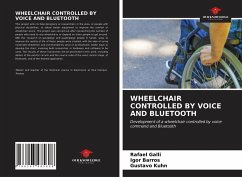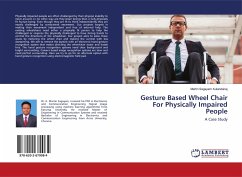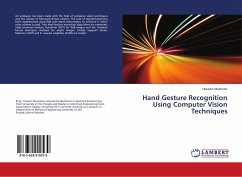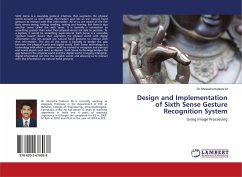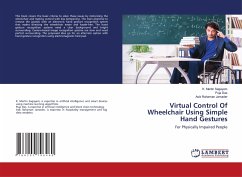
MEMS BASED GESTURE CONTROLLED WHEELCHAIR
Versandkostenfrei!
Versandfertig in 6-10 Tagen
40,99 €
inkl. MwSt.

PAYBACK Punkte
20 °P sammeln!
This book describes about a project on controlling the wheel chair using MEMS. The MEMS are fixed on the hand. Whenever the hand moves in a particular direction, the mechanical movement of the hand will be recognized by MEMS. MEMS converts this mechanical hand movement into equivalent electrical signals(X, Y, Z coordinates) and sends it to the microcontroller. Wheel chair has two D.C gear motors. These motors move in 2D direction with the help of the H-bridge. With the help of LEDs we can display status of wheel chair i.e forward, backward, left, right direction status.Micro electromechanical ...
This book describes about a project on controlling the wheel chair using MEMS. The MEMS are fixed on the hand. Whenever the hand moves in a particular direction, the mechanical movement of the hand will be recognized by MEMS. MEMS converts this mechanical hand movement into equivalent electrical signals(X, Y, Z coordinates) and sends it to the microcontroller. Wheel chair has two D.C gear motors. These motors move in 2D direction with the help of the H-bridge. With the help of LEDs we can display status of wheel chair i.e forward, backward, left, right direction status.Micro electromechanical systems (MEMS) is the technology of very small mechanical devices driven by electricity and it merges at the nano-scale into nano-electromechanical systems (NEMS) and nanotechnology. MEMS are made up of components between 1 to 100 micrometers in size (i.e. 0.001 to 0.1 mm) and MEMS devices generally range in size from 20 micrometers (20 millionths of a meter) to a millimeter. They usually consist of a central unit that processes data, the microprocessor and several components that interact with the outside such as micro sensors.





